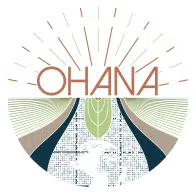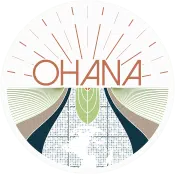
 About the author:
About the author:
Jędrzej Nadolny is a public affairs consultant who specialises in EU chemical regulations and is currently working alongside Europe’s most forward-thinking companies to guide and consolidate their green transitions.
Get to know Jędrzej and Ohana’s complete team of expert consultants.
EU Textile Labelling Regulation Revision: What’s On the Horizon
In another effort to enhance transparency and promote sustainable practices within the textile industry, the European Commission is set to conduct a revision of the EU Textile Labelling Regulation (TLR).
The revision aims to introduce new guidelines encompassing both physical and digital labelling for textiles, including specifications related to sustainability and circularity, in alignment with the Ecodesign for Sustainable Products Regulation.
Although we are only at the start of the legislative process, with the draft proposal expected for Q4 2023, in this article I will share an overview of the likely outcomes of the TLR revision, based on information gathered during events and interactions with Commission officials.
Want someone with deep experience and connections in the EU to help guide your sustainability strategy? Get in touch!
A Quick Refresher on the EU Textile Labelling Regulation
In a nutshell, the EU Textile Labelling Regulation (TLR) establishes labelling requirements for products commercialised within the Union that are made up of at least 80% of textile fibres. This includes articles like clothing, furniture coverings, mattress coverings, and even camping tents.
When intended for sale to end consumers, textile products must contain a durable and securely attached label, according to the following criteria:
- Include the composition of all textile fibres used, in decreasing percentage order, and indicate any non-textile parts of animal origin.
- Only use textile fibre names which have been officially classified by the EU Commission and included in the TLR, when listing fibre compositions.
- Be written in the official language of the country where it will be commercialised.
Although adding information such as product care, sizing and country of origin is not obligatory under the TLR, many companies are including this information as good practice.
Regarding point number two of the requirements mentioned above, it is important to note that the list of classified fibres is not static, it can be amended to include new fibres as they become available on the market. Following a certain set of criteria, organisations developing novel textile fibres can put in a request for the EU Commission to include them in the TLR, via a formal update of Annex I.
How the TLR Revision Could Benefit EU Businesses
While most legislative proposals coming out of Brussels tend to equal a list of new and challenging requirements for EU organisations, this might be less the case with the TLR revision.
This policy update, announced as part of the EU Textile Strategy, falls under the REFIT programme, which has been created to optimise and simplify EU laws, ensuring that the legislation’s objectives are achieved at a minimum cost for the benefit of citizens and businesses.
Here are some ways by which the EU Commission hopes to make compliance with the TLR easier for European companies, while also benefiting the end consumer.
Harmonised Requirements
- Standardisation of fibre composition testing methods: Current fibre composition testing methods utilised by brands and local authorities in each Member State do not match global standards. Within the revision, ISO / EN standards will be required of all stakeholders, guaranteeing an alignment between local and global testing methods.
- Standardisation of rules on leather: The Commission is planning to introduce EU-wide rules on what is authentic leather. This is an attempt to overrule the national measures that have been appearing in different EU countries (e.g., Portugal) leading to fragmentation of legislation.
- Standardisation of sizing: The European Commission wants to introduce new sizing standards for EU textiles, meaning that clothes of a certain size will have the same measurements across all brands and Member States.
The European Commission has also stated that it will look to prevent additional obligations for organisations at a Member State level. This is both a positive and highly important initiative from the Commission in my perspective, since so much fragmentation has been seen in regard to other pieces of legislation, across the different countries within the EU. I also see iit as particularly relevant in the case of leather-containing products, as several Member States have already published their own rules on that type of textile.
Simplified Labels
The small polyester booklets we now see as labels in clothing have been developed to accommodate the extensive amount of information required by current regulations, written in a number of EU official languages.
Not surprisingly, surveys demonstrate that more than 50% of consumers cut off the physical label from their clothes, as they are difficult to read and cause discomfort. Besides this, synthetic labels contribute to environmental pollution, going against the goals of the EU Microplastics Initiatives, and cause logistical difficulties for brands that need to coordinate the sewing of different labels according to the requirements of each market and national language.
To solve the problem of cumbersome textile labels, the EU Commission is planning the following measures:
- Providing information in digital form – Most of the information to be included on labels will be offered digitally, through a QR code placed on a physical carrier, for example. However, certain types of information, such as product care, may not be provided digitally, and will likely still have to be presented in a direct way on the garment.
- Using multi-purpose technological solutions – The technological solutions required under the TLR will be aligned with those used by the Digital Product Passport (DPP). This could mean, for example, that the same physical carrier would offer access to label information and the information covered by the DPP.
- Creating language-independent fibre codes – To eliminate the need for translating the text into different languages, the information about fibre composition will be presented through a standard set of fibre codes, making any required labels smaller.
The Commission also stated its intention to make physical labels less uncomfortable and harder to remove, although there was no mention of how this would be achieved. A labelling exemption is expected for certain small items, in which adding a physical and hard-to-remove label would decrease functionality.
Improvement of the fibre classification process
There is currently a lot of innovation on the market of novel fibres. Some companies, such as TreeToTextile have developed new distinctive fibre types. According to their analysis, the novel fibres might have a lower environmental impact than conventional fibres, which may be a way to decrease the overall impacts of textile products.
However, the general consensus in the industry is that the process of updating the fibre names in TLR’s Annex I is untransparent and does not reflect the distinctive characteristics of the novel fibres.
The good thing is that the Commission is planning to improve the fibre classification process under the TLR revision, making it more accurate when it comes to distinctive fibres. This, in the long term, should create a better recognition of the novel fibre types.
Expected Challenges Resulting from the TLR Revision
Still, the revision of the Textile Labelling Regulation is also expected to bring challenges for textile companies. Here are some of the challenges they should start preparing for.
Changes in Product Care Information
Currently, textile care information is conveyed through five symbols owned by GINETEX, a privately-run French International Association for Textile Care Labelling.
Within the TLR revision, the EU Commission wants to create its own standard code for that purpose, which I believe could have both positive and negative impacts on the industry. While it is good that this would prevent the incorporation of a private standard into EU law, it could also lead to a misalignment with product care codes adopted in non-EU markets, such as China, Japan, and Southern American countries, which will continue using the GINETEX standard.
In line with the goals of the EU Communications Framework and the guidelines within the Ecodesign for Sustainable Products Regulation, there is also an intention to expand the scope of the care information. This could mean adding instructions about how to make the product last longer or how to reduce microfiber emissions during washing, although how this expansion would be done still remains unclear.
New Requirements for Leather and Fur
As it stands, Article 12 of the TLR requires textile labels to clearly indicate the presence of non-textile parts of animal origin, but the EU Commission is considering the introduction of new information requirements for leather and fur as part of the policy revision.
The requirements would formally add leather garments and accessories to the TLR’s scope, and it is possible that the new label would include details concerning animal species, fur sourcing methods, and even leather deforestation aspects.
Other Potential Sustainability Information Requirements
The Commission unit responsible for the TLR revision is facing pressure from civil society, urging the institution to include additional information on working conditions and sustainability aspects, like durability and repairability, in textile labels.
The industry’s position on the matter is that the TLR should focus on communicating the material composition of textiles, while sustainability and social concerns should be limited to their respective legislative initiatives, in this case, the Ecodesign Regulation and EU Corporate Sustainability Due Diligence Directive.
It remains to be seen how the European Commission will respond to these conflicting arguments, however an important factor is that the unit working on the revision belongs to the Directorate-General for Internal Market, Industry, Entrepreneurship and SMEs (DG GROW) – a directorate that is generally open to the industry’s arguments.
Want someone with deep experience and connections in the EU to help guide your sustainability strategy? Get in touch!
Join our newsletter to keep up to date with the latest news and information coming out of the EU.


